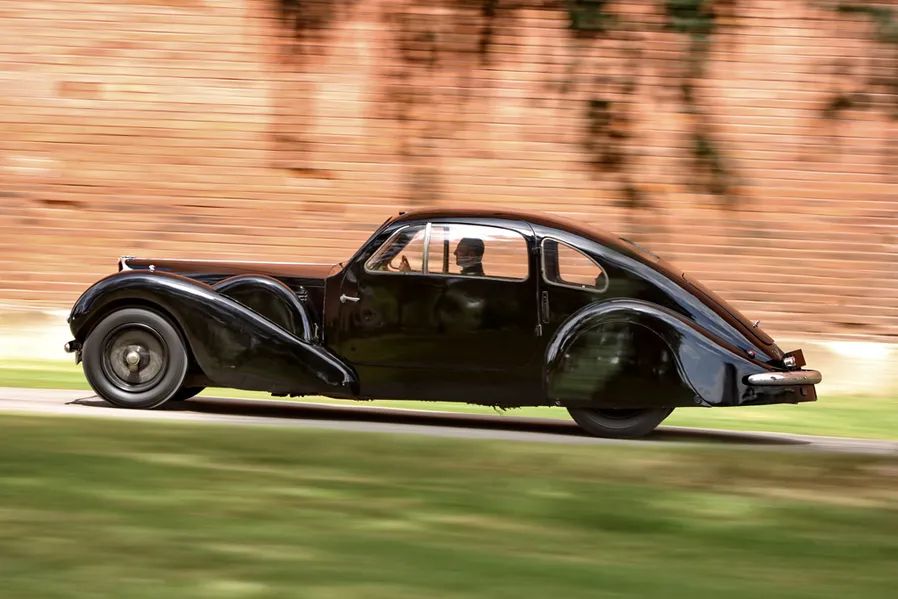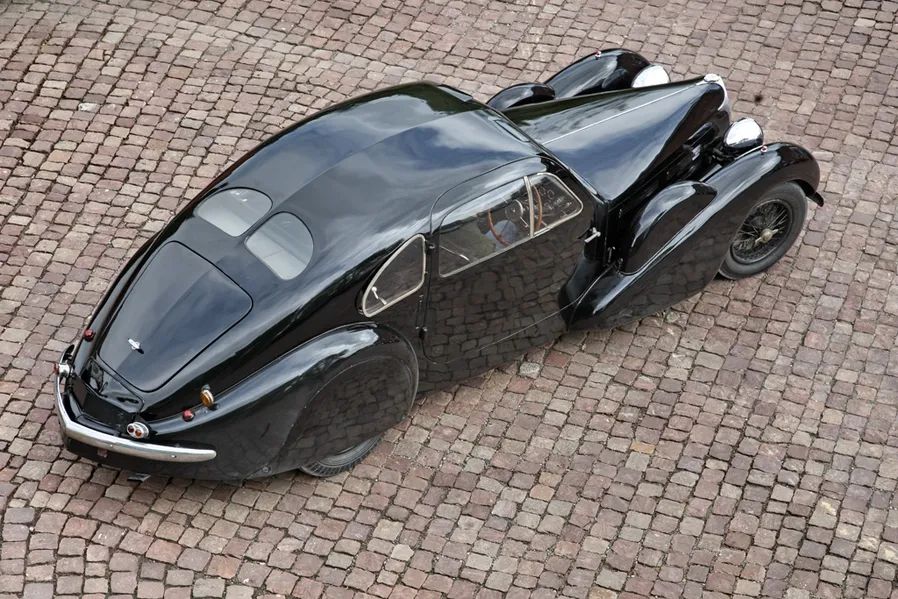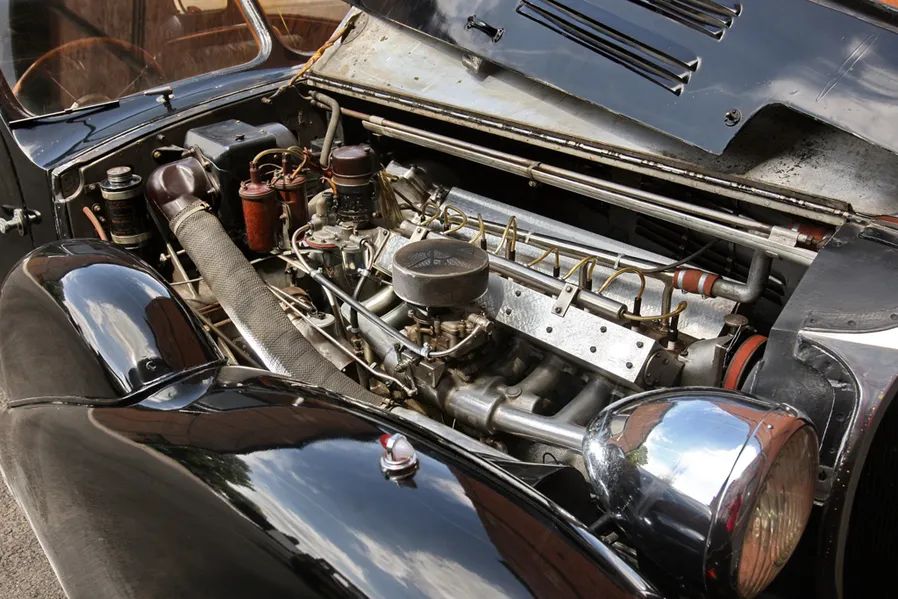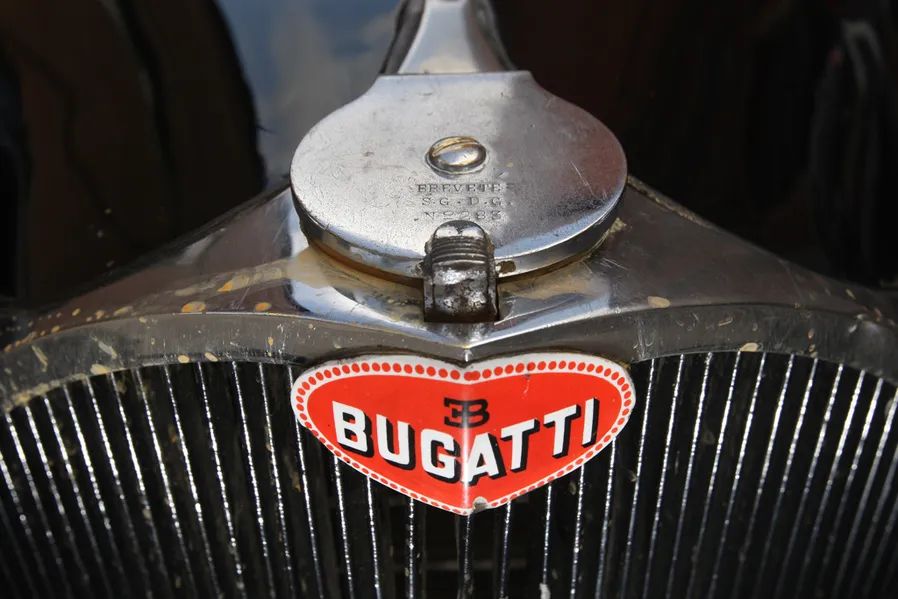Bugatti Type 64 driving report: Jean Bugatti's legacy
The Bugatti Type 64 was the last Bugatti that Ettore's son Jean created before his death in an accident in 1939. After half a century, the prototype was made operational again - Motor Klassik was allowed to drive the first kilometers.
The last oil change was carried out on the Bugatti Type 64 at mileage 19,597. According to the note on the front left of the engine compartment, 40 single-grade oil was used. Today the counter shows 22,654 kilometers, so basically there is no urgent need for action - although there is an estimated half a century between the two counter readings, nobody knows for sure.
One car from the Schlumpf collection is to be restored every year
"So we first drained the old lubricant, filled in fresh oil - this time 50-grade single-grade oil - and used a kind of hand pump to build up oil pressure in the plain-bearing crankshaft and on the camshafts," explains Brice Chalançon, head of the restoration workshop at the Cité de l'Automobile in Mulhouse, France, also known as the Schlumpf collection.

Around 400 vehicles are on display in the halls of the former wool spinning mill, a further 200 in the surrounding brick buildings - almost all in wonderful original condition, but very few are actually ready to drive. “We want to carefully prepare a few cars from the collection every year so that we can present them in action to the public,” says Emmanuel Bacquet, the director of the state museum.
The Bugatti Type 64 is at the top of his list, after all, the test vehicle is the last car that Ettore's highly talented eldest son Jean created before his death.
Jean Bugatti was born Gianoberto Carlo Rembrandt
Monsieur Jean, as he was called by the almost 1,200 employees in Molsheim at times, was actually called Gianoberto Carlo Rembrandt and was born in 1909 in Mülheim near Cologne, where his father Ettore was employed by the Deutz company. A year later, however, the family moved to (soon to be) Alsace in France, where Ettore Bugatti built his own creations from then on, and Gianoberto became Jean.

The inquisitive Jean Bugatti spent his youth in the workshops. When he was almost 20, he persuaded his father to follow the example of the American manufacturer Miller and install two overhead camshafts on the Bugatti engines; three years later he took over the development of the legendary Type 57. When Ettore Bugatti was mainly busy with the banks and his dream of a railcar in the late thirties (Early thrities, Ed.), Monsieur Jean steered the fortunes of Automobiles Bugatti and was also responsible for the victories at Le Mans 1937 and 1939.
Tragic accident marks the beginning of the end for the Bugatti brand
Work on the Bugatti Type 64, which was intended to replace the TYpe 57, began as early as 1938. What was particularly new was the riveted box frame made of the Dural aluminum alloy and the long-stroke 4.4-liter in-line eight-cylinder, whose two overhead camshafts were now driven by a duplex chain and no longer via spur gears. The power is transmitted by an electromagnetic Cotal transmission, and the 185 hp, 1,265 kilogram, 180 km/h four-seater is decelerated by hydraulic drum brakes from Lockheed.

However, the presentation of the elegant two-door Bugatti Type 64 with the pointed radiator of the 57 was delayed, not least because of the company's financial difficulties and the approaching war. Then came August 11, 1939: Jean Bugatti wanted to test the 57C tank for the La Baule Grand Prix on the country road between Duttlenheim and Entzheim, had to avoid a careless cyclist and crashed head-on into a tree at well over 200 km/h.
The exploding gasoline tank sets the tree and a nearby mill on fire, Monsieur Jean is thrown out of the racing car and dies instantly. Ettore Bugatti will never recover from this tragedy and dies in August 1947 as a result of a stroke.
Hispano-Suiza takes over Bugatti
Jean's much younger brother Roland, born in 1922, now runs the business in Molsheim, but without any real fortune: after a long period of infirmity, Hispano-Suiza took over the Bugatti factory in 1963 and immediately stopped automobile production for good.

Subsequently, the Alsatian Schlumpf brothers, who by then had already built up a spectacular Bugatti collection (and thus ruined themselves so much that their collection was confiscated by the French state in 1976 and made available to the public in 1982), acquired all the vehicles still in the factory , test vehicles and parts - including the Bugatti Type 64.
Article from Old-timer-cars.blogspot.com (2013), info from Motor Klassik.de
| 

